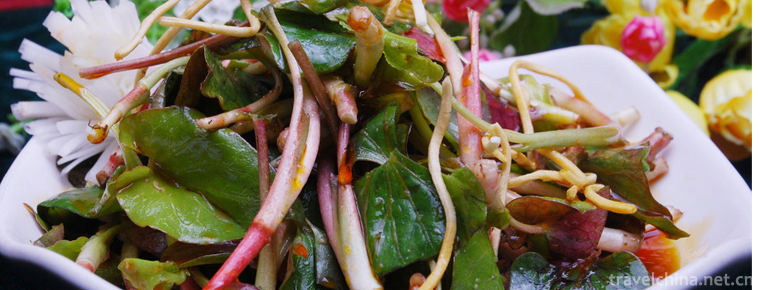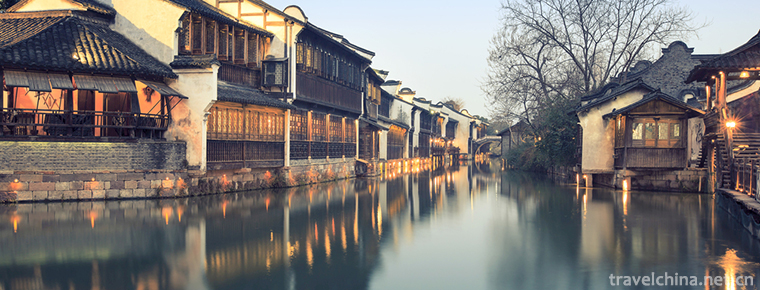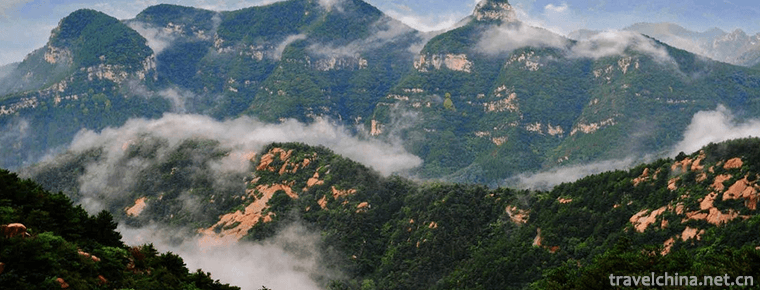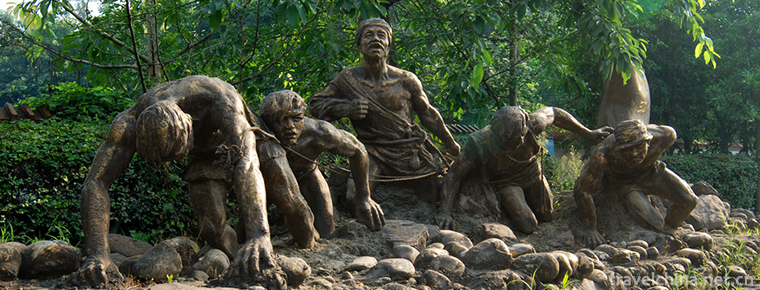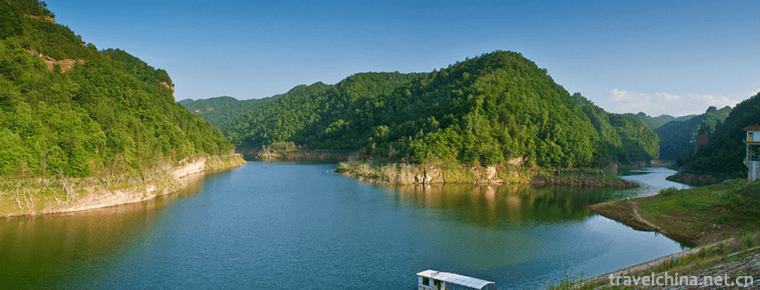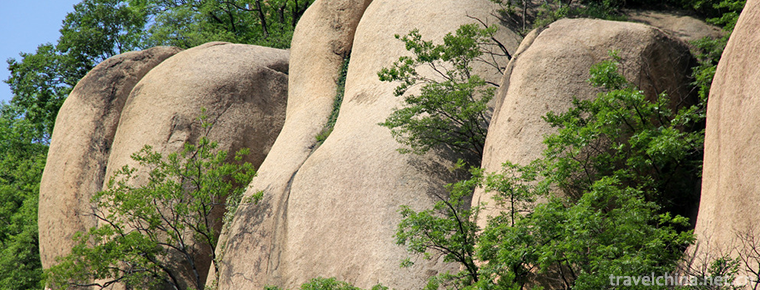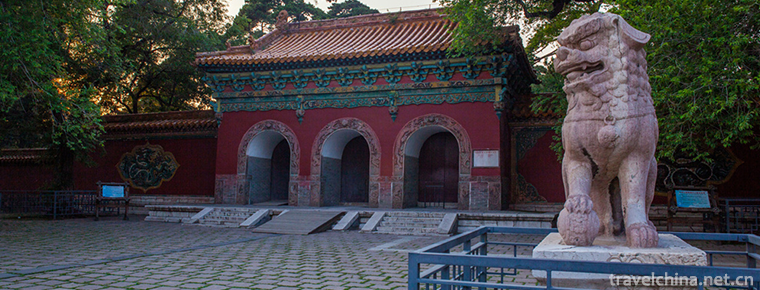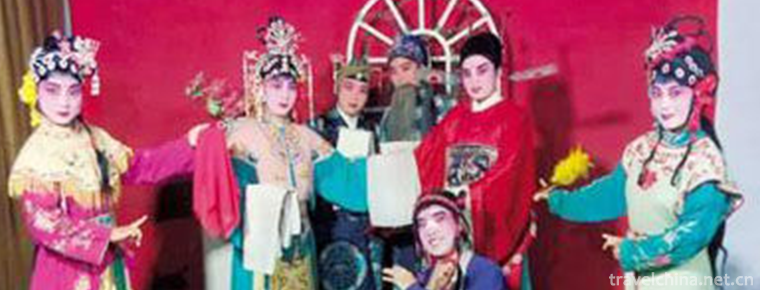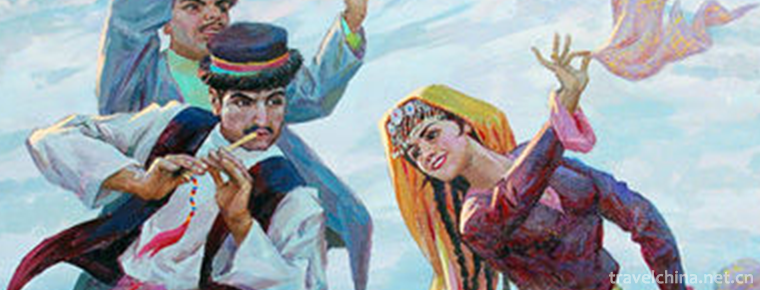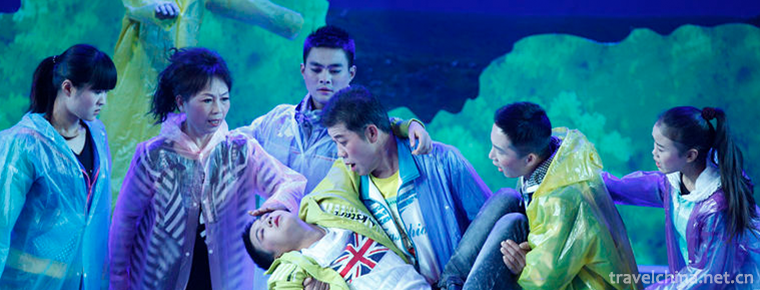Qianfoya Scenic Spot
Guangyuan Qianfoya is the largest grotto group in Sichuan Province. The statues of cliffs began in the Northern Wei Dynasty. After nearly 1500 years, the cliffs, which are 45 meters high and 200 meters long in the north and south, are covered with statue niches, overlapping 13 layers and dense as beehives. Only when the Sichuan-Shaanxi Highway was built in 1935, more than half of the statues were destroyed. Today, the only remaining niches have more than 400 statues with more than 7000 bodies. Thousand Buddha cliffs are built along the river, which is quite spectacular. The Sichuan-Shaanxi Road passes beneath them, forming an organic unity of rivers, roads, mountains and Buddhas.
geographical position
Guangyuan Qianfoya is situated on the East Bank of Jialing River, 5 kilometers north of Guangyuan City. The dangerous Pavilion of ancient trestle road, Shicuige Pavilion, is located at the south end of the cliff. Qianfoya is the largest grotto group in Sichuan. In April 1961, it was listed by the State Council as the first batch of national key cultural relics protection units.
Historical culture
edit
The statue of Qianfoya Cliff began in the Northern Wei Dynasty. It has lasted nearly 1500 years. On the cliff, which is 45 meters high and 200 meters long in the north and south, it is covered with statue niches, overlapping 13 layers, dense as beehives. According to the inscription of Xianfeng 4 years (1854) in Qing Dynasty, the statue of the whole cliff reached "17,000 wonders". Unfortunately, when the Sichuan-Shanxi Highway was built in 1935, more than half of the statues were destroyed. There are only more than 400 statues and more than 7000 statues in the Gongcaves. The whole cliff statue is centered on the Dayun Cave and divided into two sections, north and south.
Main attractions
The statue of Qianfoya Cliff began in the Northern Wei Dynasty. It has lasted nearly 1500 years. On the cliff, which is 45 meters high and 200 meters long in the north and south, it is covered with statue niches, overlapping 13 layers, dense as beehives.
The whole cliff statue is centered on the Dayun Cave and divided into two sections, north and south. The southern section of the niche grottoes are as follows: the Great Buddha Cave, lotus flower cave, Munici Pavilion, Thousand Buddha Cave, Buddha Cave, Sleeping Buddhist nicniche, multi-treasure Buddha niche, receiving Buddhist niche, providing niche, Shenlong Buddha, Ruyilun Guanyin, single Buddha Cave and so on; the northern section of the niche grottoes are as follows: Buddha niche for the third generation, worry-free flower grotto, worry-free flower grotto, Mailer Buddhnicniche, three-body Buddha niche, three-body BuddhBuddha niche, Festival monk niche, monk niche, Buddhist niche, Buddhist niche, sleeping niche, Buddhist niche, statue grotto, TiTiGrottoes, King's niches in Tibet, Lishi niches, Luxena Buddhist niches Eleven-sided Avalokitesvara, Amitabha Buddhist niches, Feitian Grottoes, Tibetan Buddhist Caves in the Qing Dynasty, etc. Dayun Cave is located in the center of Qianfoya Cliff. It has 234 statues. There are 148 Lotus Guanyin statues on the left and right sides of the cave. The main Buddha statue in the middle of the cave is Maitreya Buddha. It is said that the Maitreya Buddha is the incarnation of Wu Zetian.
Background story
In the first year of Tang Tianzhu (690), when Wu Zetian was officially crowned, 12 monks, such as Faming Buddhist monk Xue Huaiyi of Baima Temple, wrote Dayun Jing to meet the needs of Emperor Wu Zetian. In Dayun Jing, Wu Zetian was born of Maitreya Buddha and should replace Li Tang as emperor. Wu Zetian was very happy when he saw the empress. He wrote a preface and promulgated it in the world. He ordered all States to Yingzhou. The local people built a cloud cave on the Qianfo Cliff. He carved the statue of Maitreya Buddha and the two saints in the back niche, Gaozong Li Zhi and Wu Zetian. According to Chinese tradition, men should be left and women should be right, and the ranking of the two saints is women left and men right, and the niches are higher than men and lower than women, which reflects the ingenious idea of the designer. Guangyuan Municipal Cultural Relics Management Institute has built and perfected the cliff Pavilion walkway, with staircase climbing, which can reach the niches for visits.
Tourist guide
Best travel time
Qianfoya is a subtropical humid monsoon climate. The climate is mild, the light is suitable, the four seasons are distinct, and the continental monsoon is obvious. The average temperature is about 15.4 C. It is suitable for tourism all year round. Among them, March-October is the best season for tourism.
Free ticket policy
Children under 1.1 meters are free of charge; elderly people over 70 years old hold old age or identity cards, active servicemen hold officer's cards, disabled persons hold disability certificates free of tickets.
Favoured policy
Old people aged 60 to 69 buy preferential tickets for scenic spots with old age card or ID card (the above preferential policies need to be purchased by themselves in scenic spots)
1. Opening time: 9:00-17:30; [Please Book 3 hours in advance before you can enter the park]
2. Ticket Collection Place: Ticket Office of Qianfoya Scenic Area;
3. Ticket Collection: After successful booking, you will receive short messages from mother donkey's mobile phone and two-dimensional code messages from scenic spots. Please send two-dimensional code messages to the scenic spot ticket office for admission formalities.
4. Scenic Area Address: 5 km north of Guangyuan City, Sichuan Province, East Bank of Jialing River;
5. Special reminder: The scenic spot uses two-dimensional code to exchange tickets, which is valid for one month from the date of purchase.











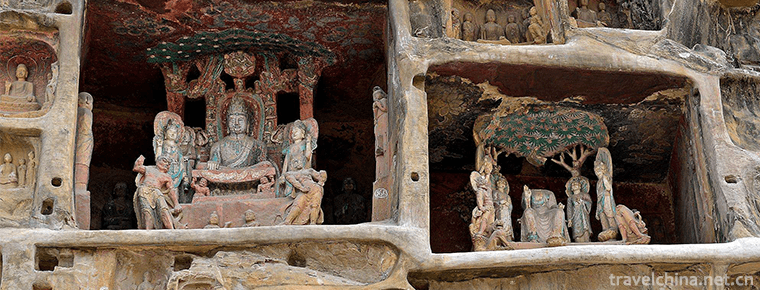
-
Houttuynia cordata Thunbherba houttuyniae
Houttuynia cordata Thunb. is a kind of herbal medicine collected in the Chinese Pharmacopoeia.
Views: 239 Time 2018-10-12 -
Wu zhen ancient town
Wuzhen, located in Tongxiang, Jiaxing City, Zhejiang Province, is located in the "Golden Triangle" of Jiangsu, Zhejiang and Shanghai.
Views: 189 Time 2018-11-11 -
Yimeng Mountain Range
Yimeng Mountain Tourist Area is a cross-regional tourism area consisting of the geographical coordinates of Mengshan and Yishan Mountains according to the local tourism department of Shandong Province.
Views: 118 Time 2018-12-08 -
Shennong Creek Scenic Area
Shennongxi, originating from the main peak of Shennongjia, flows through Badong County, Hubei Province. It travels from north to south through deep mountain canyons, and converges into the Yangtze Riv.
Views: 146 Time 2018-12-12 -
Yunya Temple Scenic Area
Yunya Temple Scenic Area is a comprehensive scenic area, which is represented by the unique Danxia landform on the Loess Plateau, and is composed of abundant forest resources.
Views: 137 Time 2018-12-22 -
Rob Village
Located 35 kilometers southwest of Yuli County, Luobu Village is 85 kilometers south of Korla City. The village covers 72 square kilometers and has more than 20 families.
Views: 186 Time 2019-02-06 -
Three Mausoleum of Shengjing
The three mausoleums outside Guanzhou refer to the Fuling Tombs of Nuerhachi, the Taizong Emperor of the Qing Dynasty, and the Zhaoling Tombs of the Taizong.
Views: 129 Time 2019-02-08 -
Haha Opera
Haha Opera, also known as Liuzi Opera and Drinking Opera, is a local opera originated from the folk in Hebei Province. It is the first national intangible cultural heritage.
Views: 210 Time 2019-05-02 -
Jingzhou Miao Geku
The Miao people's song (tgong) has been declared as the first batch of national folk intangible cultural heritage and one of the two "national treasures" of Huaihua City..
Views: 132 Time 2019-05-08 -
Uygur Sainem
Among the numerous traditional folk dances, "Sainem" is the most common form of Uygur folk song and dance. It is widely spread in the towns and villages in the north and south of Tianshan Mo.
Views: 156 Time 2019-06-27 -
Fallen Drama zhui zi xi
Fallen Drama, a traditional drama in Shenze County of Hebei Province and Suzhou City of Anhui Province, is one of the national intangible cultural heritages..
Views: 235 Time 2019-08-16
